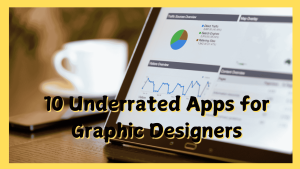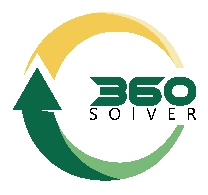10 Underrated Apps for Graphic Designers
Currently, graphic designers employ a wide range of tools to create content. We rely on editors, prototyping tools, and other platforms. Tweaking files with Adobe CC or Sketch revolutionized the industry, allowing creators to express themselves more deeply.

While most designers utilize photo editing software, that doesn’t imply we shouldn’t expand our creative toolset with fresh resources. It amazes me that many artists still handle file organization and publishing manually when so many tasks might be automated.
This is my perspective on the tools that can make a creator’s life considerably easier.
Productivity and Organization
1. Pics.io: File Organization
In my experience, there are numerous teamwork-related obstacles in design. Most teams use extensive email chains to exchange files, comment on modifications, and display drafts to customers.
To simplify your daily life, consider developing an all-in-one cloud-based file library that your entire team can access. This is what Pics.io is all about: the ability to examine drafts, manage teams, and receive client feedback in one spot. I adore it because it provides authors with a variety of organizational options, including a metadata editor, automatic and custom keywording, automatic backup, and file security.
Why Designers Should Use It:
- To maintain track of their assets and find necessary files in seconds.
- Easily communicate and manage teams with comments and version control.
- To keep track of license expiration dates and avoid legal issues.
- To share your portfolio with clients, use branded websites or proofreading templates.
- To provide a one-stop shop for managing Google Drive and Amazon S3.
2. Noisli—to cut off distractions.
If you find it difficult to work from home because your family is too loud or your dog is unpleasant, making an effort to establish a productive environment may enhance your level of pleasure with your work as well as the number of tasks you do in a day.
To keep focused during the workday, I use Noisli, a software that generates a personalized background sound based on my mood.
Why Designers Should Use It:
- The site provides dozens of high-quality background noises that are easy on the ears and help you get into the creative zone.
- Make your own playlists based on what music inspires you today, whether it’s relaxing or uplifting.
- Adjust the sound oscillation to filter out the sounds of your children playing outside, neighbors fighting, or a running coffee maker.
- Shuffling the playlist ensures that the sound selection is always random.
3. Workflowy.
If you find yourself overwhelmed with a large amount of activities each day, having a tool for organizing your routine and putting things in order can be really beneficial. Workflowy is my particular favorite since it makes even the most complex undertakings feel manageable. What’s not to appreciate about the platform’s basic UI and its pared-down, to-the-point feature set?
Why Designers Should Use It:
- To build task lists and share them with peers.
- Sleek UI without confusing user workflows or redundancy that would irritate UX designers.
- Use keyboard shortcuts to manage your list more efficiently.
- Design Editing
4. Procreate.
Procreate is an excellent program for making sleek and attractive digital illustrations, and I wish more designers used it. Although Procreate requires an iPad to work, the platform’s capabilities are stunning. These are some of my favorite Procreate designs.
Why Designers Should Use It:
- Has an easy-to-use interface with dozens of tools (for example, you can view the whole color palette of a photo with a single click).
- Apply fantastic effects to make your illustrations shine out (I personally love the “Liquify” filter).
- Create spectacular shapes and geometrical patterns.
5. Pocket Palette
This is another useful tool that makes designers’ lives much easier. If choosing colors for artwork is difficult for you, make things easy for yourself by continually gathering inspiration. Color Palette Pocket (a Google Chrome plugin) allows me to see the colors used to build webpages, e-books, and other online content. Because it is an extension, the software takes up no storage space and does not reduce your device’s productivity.
Why Designers Should Use It:
- Get the hexadecimal breakdown of every color you see online.
- To save favorite or often used colors into a curated library.
- To get design inspiration anywhere, anytime.
6. Design bold
Being a designer is defined by the ability to create things from the ground up. So, while I enjoy building things on my own, creators do not always have time for meticulous work.
That is why I believe it is perfectly OK to use template-based editors on occasion. Personally, I use Design Bold, which offers thousands of adaptable templates and a configurable editor.
Why Designers Should Use It:
- Get design inspiration for your job.
- To create clean, eye-catching designs in minutes.
- To see which sizes and styles are commonly used for popular content kinds.
7. Banner snack.
Creating banners is not easy right now because Google Ads, Facebook, and other advertising platforms have placed so many design requirements for artists. It’s difficult to keep track of all the requirements; this is when BannerSnack comes in helpful.
Banner Snack is essentially a simple banner editor with thousands of themes designed specifically for Google Ads, Facebook Ad Manager, and other popular advertising platforms. The designs are also extremely fancy; it will take even a professional a minute or two to find out that you did not do all of the work yourself.
Why Designers Should Use It:
- To employ design presets that have already been tailored to major advertising platforms.
- To find inspiration for unique banner designs.
- To reduce the time required to produce a new design.
- Create a prototype that will serve as the foundation for your original work.
- CSS, HTML, and JavaScript editors for publication
8. Webstorm.
Whenever I need to make front-end changes in JavaScript, I always use Webstorm as my go-to IDE. The tool is simple to use, supports all major frameworks, and is thoroughly documented. If you get stuck when formatting, user guides will provide answers to all questions.
Why Designers Should Use It:
- Edit the front end on both the web and mobile.
- To debug and test your code (if you are proficient in JavaScript development).
- To use Git and GitHub for assistance and increased work efficiency.
9. Aloha
Although HTML5 editing is not a requirement for designers, it is a valuable and empowering skill. If you want to learn more about markup and create HTML5 changes on your own, consider using the Aloha editor to help you along the way. Personally, I enjoy the editor because of its speed, ease of use, and open source nature.
Why Designers Should Use It:
- Make rapid formatting changes to inline text, photos, or animations.
- A/B test various website layouts.
- To create designs that comply with HTML5 Specification Draft. 10. Bootstrap
10. Editor
Although Bootstrap is not one of the most underestimated tools (most web developers I know adore it and use it religiously), it is less popular among designers. Personally, I think that more graphic designers should learn how to use Bootstrap. It’s just that excellent, with a collection of icons, hundreds of website UI designs, and a built-in CDN compiler.
Why Designers Should Use It:
- To design high-performance web UIs and layouts.
- Customize templated designs.
- Collaborate with developers to construct responsive webpages and WPAs.
Conclusion
As designers, we were always able to make technological advancements work in our favor by incorporating fantastic picture editors, prototypers, and other tools into our workflow. However, graphic design is more than just Sketch, Adobe CC, and Figma; let’s spend more time exploring other fantastic platforms that improve the quality of our work and how much we like doing it. Hopefully, these tools will make designing, focusing on your job, and collaborating with front-end developers significantly easier.

